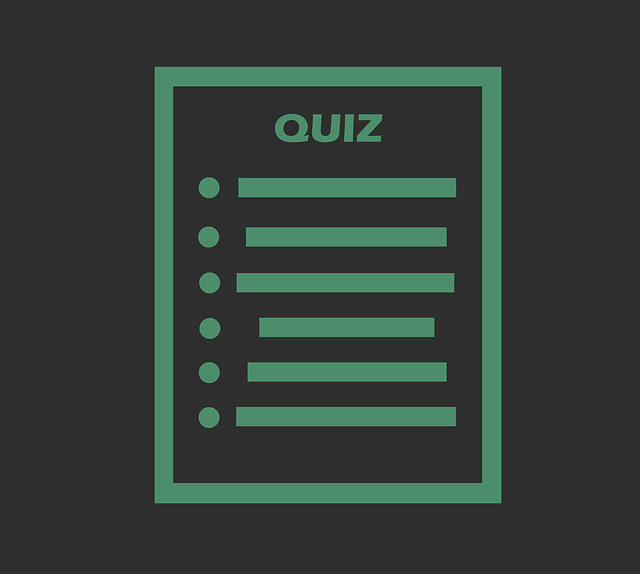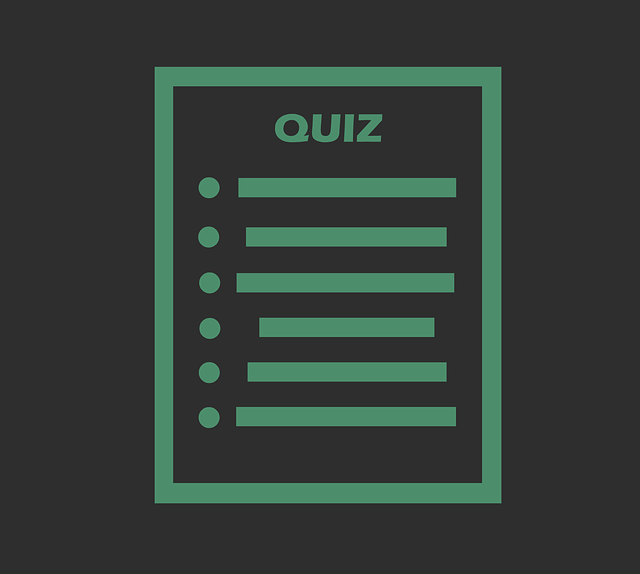In this blog you will find the correct answer of the Coursera quiz The Challenges of Global Health Coursera Answer mixsaver always try to brings best blogs and best coupon codes
Week- 2
Quiz: Basic Concepts in Global Health
1.
Question 1
What is the World Health Organization definition of health?
1 point
- The condition of being well or free from disease
- To not be sick
- The absence of disease or infirmity
- A state of complete physical, mental, and social well-being
2.
Question 2
The Global Health approach approach to improving health outcomes includes
1 point
- none of the above two strategies
- a combination of the above two strategies
- population-based strategies
- individual-level medical strategies
3.
Question 3
Which of the following is not one of Global Health’s rationales?
1 point
- Survival of the Fittest
- Altruism
- Self-Interest
- Social Justice
4.
Question 4
Diabetes is a Group I disease
1 point
- True
- False
5.
Question 5
North Africa and the Middle East generally fall under which WHO region?
1 point
- EMRO
- AMRO
- MENA
- SEARO
6.
Question 6
The “double yoke” or “double burden” of disease is most predominant in which group of countries?
1 point
- LMIC
- OECD
- Global North
- High Income
7.
Question 7
DALYs combine YLL (Years of Life Lost) and YLD (Years of Life with Disability).
1 point
- False
- True
8.
Question 8
Which set of countries has the most DALYs from Category 1 disorders?
1 point
- Global South
- Global North
9.
Question 9
What is the model that we use to analyze and understand determinants of health?
1 point
- Neuropsychiatric
- Biomental
- Biopsychosocial
- Sociobiological
10.
Question 10
Which is not an example of an environmental determinant?
1 point
- All of the these choices are environmental determinants.
- Water contaminated with feces
- Smoke from cooking fires
- Outdoor particulate matter in the air
11.
Question 11
Which region has the greatest burden of outdoor air pollution?
1 point
- Asia
- North America
- Eastern Mediterranean
- SubSaharan Africa
12.
Question 12
Climate change can contribute to undernutrition.
1 point
- False
- True
13.
Question 13
Night blindness can be attributed to a deficiency of
1 point
- Zinc
- Vitamin A
- Protein
- Iron
14.
Question 14
Our chief goal in global health is to increase DALYs
1 point
- True
- False
15.
Question 15
Road traffic injury will be an increasingly significant issue in Global Health
1 point
- True
- False
16.
Question 16
Smoking still is an increasingly significant issue in Global Health.
1 point
- True
- False
17.
Question 17
Why should we focus on Global Health and its challenges?
1 point
- for the sake of social justice
- altruism for others
- it’s important for our own self-interest
- a and b
- a, b, and c
18.
Question 18
Wrapping it all up: Imagine a mother and her newborn daughter. The mother is 35, and unfortunately dies at age 36 after battling post-partum hemorrhage. The newborn survives, and lives a long life despite living with a goiter. Assume the mother’s original life expectancy was 70 years. Which category does the mother’s condition fall into?
1 point
- Group 1
- Group 2
- Group 3
19.
Question 19
Wrapping it all up: Imagine a mother and her newborn daughter. The mother is 35, and unfortunately dies at age 36 after battling post-partum hemorrhage. The newborn survives, and lives a long life despite living with a goiter. Assume the mother’s original life expectancy was 70 years. Which group of disease burden (1, 2, 3) does the daughter’s condition fall into?
1 point
- Group 1
- Group 2
- Group 3
20.
Question 20
Wrapping it all up: Imagine a mother and her newborn daughter. The mother is 35, and unfortunately dies at age 36 after battling post-partum hemorrhage. The newborn survives, and lives a long life despite living with a goiter. Assume the mother’s original life expectancy was 70 years. Which nutritional deficiency may have caused the child’s goiter?
1 point
- Iodine deficiency
- Vitamin A deficiency
- Calcium deficiency
Week- 3
Quiz: Understanding the Key Global Health Challenges
1.
Question 1
A mosquito acquires the malaria parasite from an infected human and transmits the parasite to another human. The parasite is considered to be the disease
1 point
Host
Reservoir
Vector
Agent
2.
Question 2
Co-infection with HIV and TB has what impact on mortality?
1 point
None of these choices
Decreases mortality
Has no impact
Increases mortality
3.
Question 3
Which of the following can contribute to wide global spread of infectious disease?
1 point
All of these choices
Tourism
International trade
Migration
4.
Question 4
Medical adherence to ARV drugs is very important for disease control
1 point
False
True
5.
Question 5
Tuberculosis is caused by a
1 point
Helminths
Bacteria
Mosquitoes
Plasmodia
6.
Question 6
If the prevalence and incidence of a disease is reduced to zero, but measures (such as vaccinations or insecticide treatments) are still required to prevent resurgence, the disease is considered to be:
1 point
Halted
Controlled
Eliminated
Eradicated
7.
Question 7
A pandemic is an epidemic that is widespread and possibly global in reach
1 point
False
True
8.
Question 8
An example of a risk factor for NCDs include
1 point
All of these choices
Air Pollution
Poverty
Growing urbanization
9.
Question 9
The Global North has a higher percentage of total DALYs from NCDs than the Global South
1 point
False
True
10.
Question 10
Type II diabetes is
1 point
When your body does not have enough glucose
When your body does not produce enough or any insulin
When your body becomes resistant to insulin
When your body produces glucose
11.
Question 11
One of the most important strategies for improving newborn health is
1 point
Dietary supplementation with grains
Early acclimation to the living environment
Breastfeeding
12.
Question 12
Many maternal deaths are due to
1 point
Hemorrhage
None of these choices
Both hemorrage and infection
Infection
13.
Question 13
Complex emergencies are
1 point
External conflicts with large scale displacement of people, mass famine or food shortage
Conflicts with large-scale displacement of people, mass famine or food shortage
External conflicts among governmental officials of multiple countries
Internal onflicts among governmental officials of a country
14.
Question 14
Road traffic injuries are the leading cause of death among
1 point
60-74 year olds
45-59 year olds
15-29 year olds
30-44 year olds
15.
Question 15
A(n) _____ allows an agent to transmit from a reservoir to a host.
1 point
environment
triad
vector
mosquito
Week- 4
Quiz: Actors & Action: Finding Global Health Solutions
1.
Question 1
The Global Health “System” works through
1 point
state-financed NGOs.
a highly structured, hierarchical collaboration of actors.
complex and constantly evolving actions, interactions, and relationships among multiple actors.
2.
Question 2
Global health actors always work collaboratively to achieve mutual goals of health equity
1 point
True
False
3.
Question 3
Kangaroo care helps with
1 point
Carrying a child
Nursing
Newborn body temperature regulation
Carrying a sleeping child
4.
Question 4
The WHO is a part of which organization?
1 point
UNITAID
The UN
USAID
UNGH
5.
Question 5
An example of a bilateral aid agency is
1 point
USAID
Gates Foundation
GAVI
FHI
6.
Question 6
It is easy for people to change their beliefs and practices to improve their health outcomes.
1 point
True
False
7.
Question 7
mPOWER is a program by the WHO targeting
1 point
Mental health stigma
Outdoor air pollution
Tobacco
Indoor air pollution
8.
Question 8
Which element below is NOT a part of social marketing strategy?
1 point
Propinquity
Promotion
Product
Price
9.
Question 9
Monitoring and evaluation of programs is as important as planning and implementing the programs
1 point
True
False
10.
Question 10
The types of constraints to the implementation of a project can include
1 point
Political
Social
All of the above
Financial
11.
Question 11
Successful pilot study in one rural region indicates the success of the same program in another rural region
1 point
False
True
12.
Question 12
One of the best practices NCD reduction is the enforcement of the 2003 Framework Convention on Tobacco
1 point
False
True
13.
Question 13
Which is the following is the US program to address HIV/AIDS globally.
1 point
One Health
UNAIDS
PEPFAR
UNDP
14.
Question 14
The Wellcome Trust is an example of a philanthropic organization
1 point
True
False
15.
Question 15
If a program is cost-effective and has been shown to better health outcomes, nothing else needs to be taken into consideration for implementation.
1 point
True
False
Week- 5
Quiz: The Future of Global Health
1.
Question 1
Many countries are expected to experience a demographic shift by 2030
1 point
True
False
2.
Question 2
Demographic transitions that most countries are expected to experience will be a result of
1 point
Low birth rate, high death rate
High birth rate, low death rate
High birth rate, high death rate
Low birth rate, low death rate
3.
Question 3
There will be an increase in traffic and road injuries in the future
1 point
True
False
4.
Question 4
In terms of Group I, II, III disorders, expected global health trends for the future are
1 point
Group I remains significant, Group II and III increase
Group I remains significant, Group II and III decrease
Group I, II, III all increase
5.
Question 5
In developed countries, non-communicable diseases will remain dominant in 2030.
1 point
False
True
6.
Question 6
Which of the following will have the least positive impact on child health
1 point
Increased school fees
Deworming programs
Lower school fees
Conditional cash transfers
7.
Question 7
Surgical capacity in LMIC needs to be increased
1 point
False
True
8.
Question 8
Traditional healers and “medicine-men” must be removed from communities for overall health to improve
1 point
True
False
9.
Question 9
A way to not address climate and environmental issues is
1 point
Low carbon technologies
Solar cooking stoves
Fuel particle and emissions control
Increased use of fossil fuels
10.
Question 10
Globally, people have access to cheap heart attack drugs, like aspirin
1 point
False
True
11.
Question 11
Malaria prevention packages include
1 point
Education
All of these choices
ITN
DDT
12.
Question 12
Climate change will reduce food supplies, increase natural disasters and displace populations
1 point
False
True
13.
Question 13
Rapid urbanization will continue to create hygiene and sanitation issues
1 point
True
False
14.
Question 14
Diabetes cases in adults is expected to
1 point
Decrease
Remain the same
Increase
15.
Question 15
Although mental health is not expected to rank high in causes of death, it is expected to cost a large amount of DALYs
1 point
True
False
Final Exam
1.
Question 1
What is the WHO definition of health?
1 point
A state of complete physical, mental, and social well-being
The absence of disease or infirmity
To not be sick
The condition of being well or free from disease
2.
Question 2
Which is the following will be an increasingly significant issue in LMIC?
1 point
Infectious Disease
Non-communicable Disease
3.
Question 3
Which of the following can decrease exposure to toxic smoke for women and children while reducing environmental impact?
1 point
Better home ventilation
Clean cookstoves
Using wood that has fully dried
4.
Question 4
An infectious disease is what type disorder:
1 point
Group III
Group II
Group I
5.
Question 5
Diabetes is considered what kind of disorder:
1 point
Group II
Group I
Group III
6.
Question 6
For Type I, II, III disorders, expected global health trends for the future are
1 point
Group I remains significant, Type II and III decrease
Group I, II, III all increase
Group I remains significant, Type II and III increase
Group I, II, III all decrease
7.
Question 7
The DALY distribution of injuries is higher in the Global South
1 point
True
False
8.
Question 8
A disease that has been wiped out of existence has undergone
1 point
Eradication
Elimination
Control
9.
Question 9
Which of the following gets the least focus in LMIC by Global Health Actors?
1 point
Mental health disorders
Clean water
Malaria
Tuberculosis
10.
Question 10
The suffix “emia” means
1 point
In the blood
Excess
Cholesterol
Deficient
11.
Question 11
Which of the following statements is false?
1 point
As long as each country has a good surveillance system, there is no need for international cooperation to combat infectious diseases.
Even if each country has a good surveillance system, there is still a need for international cooperation to combat infectious diseases
12.
Question 12
Which TWO of the following are most important for combating infectious disease?
1 point
Vector control
Agent proliferation
Host eradication
Environmental modification
13.
Question 13
Microbial resistance is not a global problem
1 point
True
False
14.
Question 14
Increased schooling can have an impact on multiple global health challenges.
1 point
False
True
15.
Question 15
An example of a prevention strategy is
1 point
Immunization programs
Seatbelt/helmet laws
Malaria net programs
All of these choices
16.
Question 16
Which of the following is not a determinant of obesity?
1 point
Sedentary lifestyle
Undernutrition
Overnutrition
Malnutrition
17.
Question 17
PAHO focuses on
1 point
Health in Africa
Health in Animals
Health in Asia
Health in Americas
18.
Question 18
If a program is cost-effective and has been shown to better health outcomes, nothing else needs to be taken into consideration for implementation.
1 point
False
True
19.
Question 19
People quickly and easily change their beliefs and habits to improve health
1 point
True
False
20.
Question 20
Approaching a global health issue requires
1 point
imposing “the right thing to do” on your target population.
flexibility, analysis, and multi-dimensional thinking.
creating vertical systems combating health conditions
21.
Question 21
The dengue virus is carried by a mosquito, where the mosquito acquires the virus from a sick individual and transmits the virus to a healthy individual. In this case, the virus is a(n)
1 point
Host
Vector
Reservoir
Agent
22.
Question 22
Most important risk factors for environmentally related disease are
1 point
Indoor air pollution, outdoor air pollution, unsafe water
Indoor air pollution, global warming, outdoor air pollution
Urbanization, sanitation, outdoor air pollution
Unsafe water, global warming, urbanization
23.
Question 23
The vector for malaria is
1 point
Female and male anopheles mosquitoes
Male anopheles mosquitoes
Fruit flies
Female anopheles mosquitoes
24.
Question 24
Which of the following can frequently lead to an increase in Category I, II, and III disorders?
1 point
Traffic Injury
Pandemics
Complex Emergencies
Uni-polar Depression
25.
Question 25
Which of the following is the most important underlying concept for understanding and improving global health:
1 point
World peace
Enlightened selfishness
Individual responsibility
Interdependence
Important Links:
- Advanced Algorithms and Complexity Coursera Week 1 Quiz
- Business Analytics for Decision Making Coursera Week 1 Quiz
- Epidemiology: Successful Career Development Coursera Week 1
- How Things Work: An Introduction to Physics week 1
- Introduction to Public Speaking Coursera week 1 Quiz





